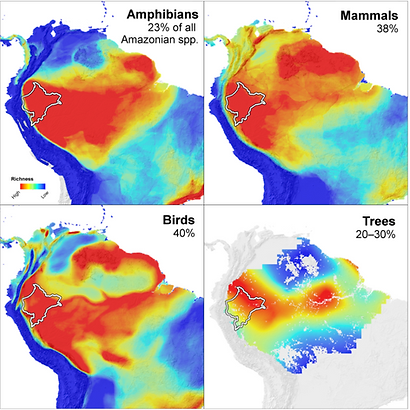THE FIELD MUSEUM
The Field Museum is one of the world’s great natural history museums. The Keller Science Action Center is the branch of the Museum dedicated to translating science into action that creates and supports lasting conservation. With losses of natural diversity mounting, the Keller Science Action Center focuses the Museum’s resources – scientific expertise, worldwide collections, innovative education programs – on the immediate needs of conservation at local, national, and international levels.
The Field Museum carries out rapid inventories in close partnership with organizations in the host country. Based in Chicago, our small team of biologists, social scientists, and support staff works with partners to assemble large teams of in-country experts and local residents. Since the first rapid inventory in 1999 we have worked with thousands of groups, hundreds of local communities, dozens of in-country organizations, and more than 20 different Indigenous peoples.

WHERE WE WORK
The Rapid Inventories team has conducted 32 inventories since 1999, the majority of which (25) have taken place in the Andes-Amazon region. Six were conducted in Cuba and one in China. The Andes-Amazon is one of the most biologically and culturally diverse regions in the world, and it is also where many of the most promising conservation opportunities are, due to the longstanding stewardship of these territories by Indigenous and local peoples.


THE RESEARCH
The team synthesizes its findings in Rapid Inventory reports, reports and presentations to stakeholders, and scholarly publications. We share not only the data we collect on inventories, but the implications these data have for protection and management in these areas. Data collected on rapid inventories have been used in more than 130 peer-reviewed scientific publications to date.
In a 2021 paper in Science Advances, our team shared our approach through a case study of the state of Loreto, Peru, where conservation coverage has quadrupled in the last 20 years. From 2000–2016, biological and social scientists worked to increase the protected proportion of Peru’s largest department via 14 interdisciplinary inventories covering >9 million hectares of this megadiverse corner of the Amazon basin. In each landscape, the strategy was the same: convene diverse partners, identify biological and sociocultural assets, document residents’ use of natural resources, and tailor the findings to the needs of decision-makers. Nine of the 14 landscapes have since been protected (5.7 million hectares of new protected areas), contributing to a quadrupling of conservation coverage in Loreto (from 6 to 23%). We outline the methods and enabling conditions most crucial for successfully applying similar campaigns elsewhere on Earth.

These maps illustrate the distribution of species richness of four taxonomic groups across South America from highest (red) to lowest (blue). The white border outlines Peru’s Loreto region, which accounts for five percent of the Amazon basin’s area. Percentages in each panel indicate the proportion of all Amazonian species expected to occur in Loreto.
